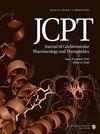冠状动脉搭桥术患者远程缺血预处理释放体液心脏保护因子的生物测定
IF 2.8
4区 医学
Q2 CARDIAC & CARDIOVASCULAR SYSTEMS
Journal of Cardiovascular Pharmacology and Therapeutics
Pub Date : 2022-01-01
DOI:10.1177/10742484221097273
引用次数: 4
摘要
远程缺血预处理(RIC)诱导循环心脏保护因子的释放并减轻心肌缺血/再灌注损伤。这种体液性心脏保护因子的证据来源于血浆(衍生物)从一个接受RIC的个体转移到另一个个体的心脏,甚至跨物种。在转移到分离的灌注心脏中时,只有一个血浆(衍生物)样本可以以梗死面积为终点进行研究,因此RIC前后或RIC与安慰剂之间的样本比较受到分离灌注心脏梗死面积个体间差异的阻碍。因此,我们开发了一种从单个小鼠心脏制备心肌细胞的方法,其中同一心脏的等分试样可以在没有或有药物阻断的情况下暴露于缓冲液、RIC或安慰剂样品中进行缺氧/复氧(H/R)。为了验证这种方法,我们使用了在RIC前后从接受过RIC保护的冠状动脉搭桥术患者身上采集的血浆透析液(肌钙蛋白释放↓ 与安慰剂相比增加28%)。心肌细胞生物测定在用缓冲液进行H/R后几乎没有变化(平均值±标准差;7%±2%的活细胞),并且在RIC后显示出保留的活力(15%±5%对6%±3%)。相比之下,整体缺血和再灌注后分离的小鼠心脏的梗死面积为RIC后左心室质量的22%±14%,而RIC前为42%±14%。Stattic,一种信号转导和转录激活因子(STAT)3蛋白的抑制剂,消除了对心肌细胞的保护作用。因此,我们建立了心肌细胞生物测定法来分析RIC的保护作用,最大限度地减少个体间的变异和动物的使用。本文章由计算机程序翻译,如有差异,请以英文原文为准。
Bioassays of Humoral Cardioprotective Factors Released by Remote Ischemic Conditioning in Patients Undergoing Coronary Artery Bypass Surgery
Remote ischemic conditioning (RIC) induces the release of circulating cardioprotective factors and attenuates myocardial ischemia/reperfusion injury. Evidence for such humoral cardioprotective factor(s) is derived from transfer with plasma (derivatives) from one individual undergoing RIC to another individual’s heart, even across species. With transfer into an isolated perfused heart, only a single plasma (derivative) sample can be studied with infarct size as endpoint, and therefore the comparison of samples before and after RIC or between RIC and placebo is hampered by the inter-individual variation of infarct sizes in isolated perfused hearts. We therefore developed a preparation of cardiomyocytes from a single mouse heart, where aliquots of the same heart can undergo hypoxia/reoxygenation (H/R) with exposure to buffer, RIC, or placebo samples without or with pharmacological blockade. To validate this approach, we used plasma dialysates taken before and after RIC from patients undergoing coronary bypass grafting who had experienced protection by RIC (troponin release ↓ by 28% vs placebo). The cardiomyocyte bioassay had little variation after H/R with buffer (mean ± standard deviation; 7% ± 2% viable cells) and demonstrated preserved viability after RIC (15% ± 5% vs 6% ± 3% before). For comparison, infarct size in isolated mouse hearts after global ischemia and reperfusion was 22% ± 14% of left ventricular mass after versus 42% ± 14% before RIC. Stattic, an inhibitor of signal transducer and activator of transcription (STAT)3 protein, abrogated protection in the cardiomyocytes. We have thus established a cardiomyocyte bioassay to analyze RIC’s protection which minimizes inter-individual variation and the use of animals.
求助全文
通过发布文献求助,成功后即可免费获取论文全文。
去求助
来源期刊
CiteScore
6.00
自引率
0.00%
发文量
33
审稿时长
6-12 weeks
期刊介绍:
Journal of Cardiovascular Pharmacology and Therapeutics (JCPT) is a peer-reviewed journal that publishes original basic human studies, animal studies, and bench research with potential clinical application to cardiovascular pharmacology and therapeutics. Experimental studies focus on translational research. This journal is a member of the Committee on Publication Ethics (COPE).

 求助内容:
求助内容: 应助结果提醒方式:
应助结果提醒方式:


